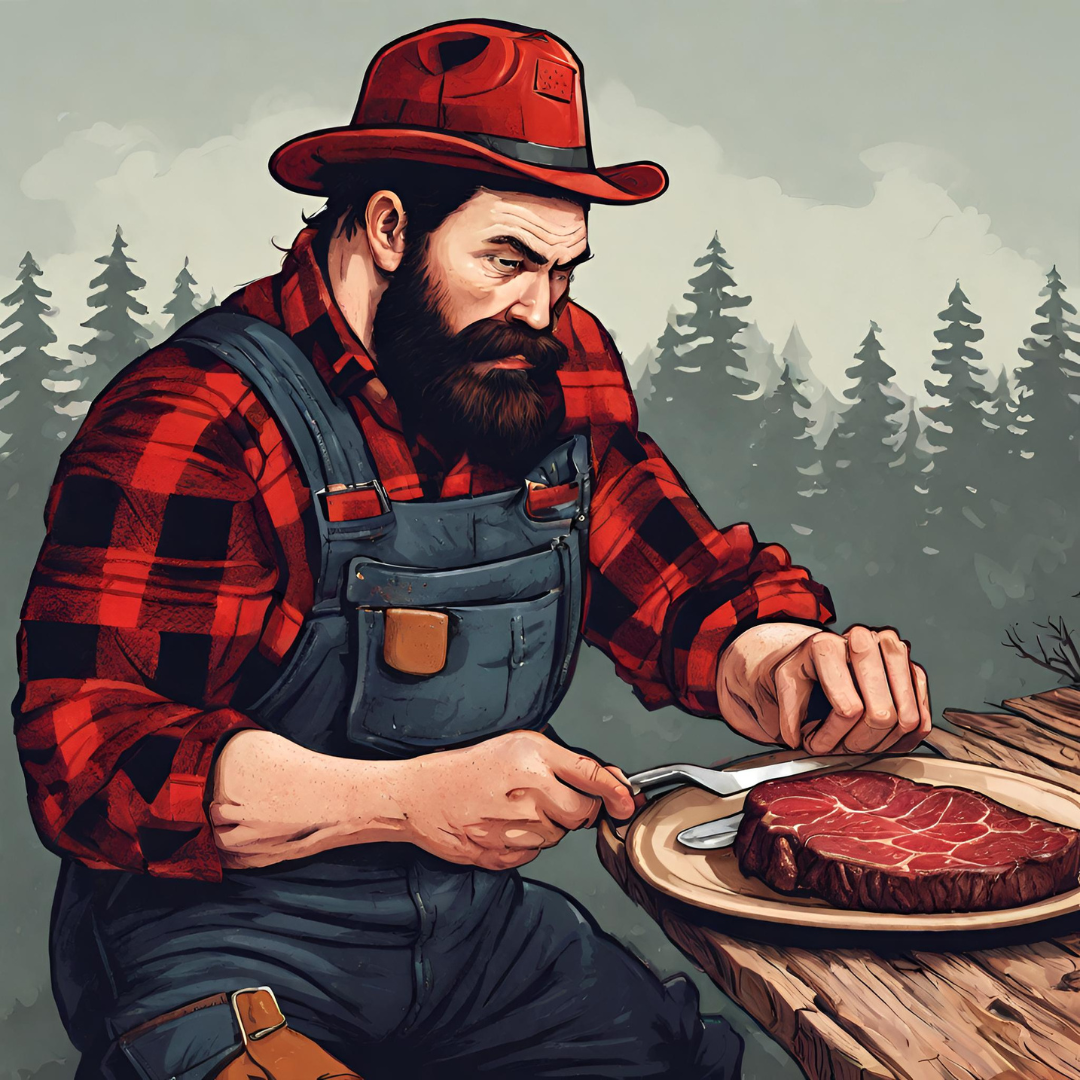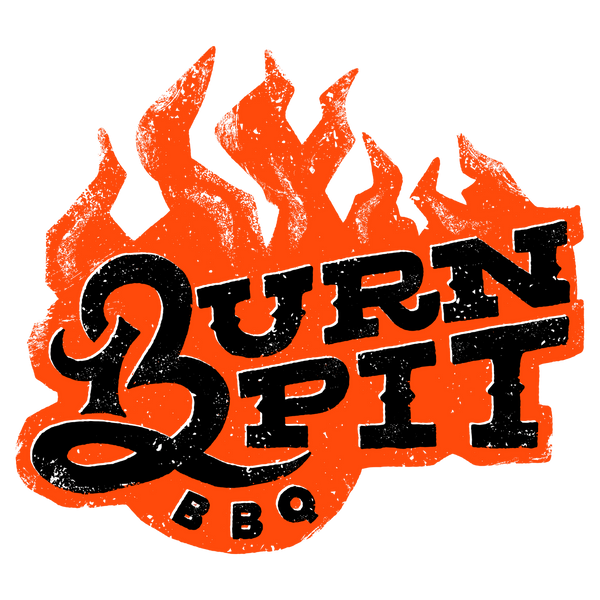
How To Season And Grill The Perfect Steak
Share
Steak, the holy grail of grilling. Some might say that knowing how to grill the perfect steak is a prerequisite to manhood. I’m not saying that I say that, but some might.
If you are just starting out or need a refresher, I’ve got you covered. I’ll break down the basics of grilling a steak and give some tips on how to achieve the perfect cook.
Let’s start with the definition of a steak.
Steak/ˈstāk /
noun
Plural steaks
: a slice of meat cut from a fleshy part of a beef carcass
Now I know there are other types of steaks (see ham steak), but for this article, I’m talking beef!
Here are the different types of steaks that you might be familiar with:
Filet Mignon:
Cut from the tenderloin, this is one of the most tender and expensive steaks.
It has a lean texture and is known for its buttery and mild flavor.
Ribeye:
Cut from the rib section, it is well-marbled with fat, making it juicy and flavorful.
Ribeye is known for its rich taste and tenderness.
New York Strip:
Cut from the loin, it's less fatty than ribeye but still has good marbling.
It has a robust flavor and is relatively tender.
T-Bone:
This steak includes a T-shaped bone with meat on both sides – one side is the strip, and the other is the tenderloin.
It offers a combination of tenderness and rich flavor.
Porterhouse:
Similar to T-bone but with a larger portion of the tenderloin.
It's a large steak, perfect for sharing, and offers a combination of tenderness and flavor.
Sirloin:
Cut from the hip area, it's leaner compared to other cuts.
Sirloin has a beefy flavor but is less tender than cuts from the rib or loin.
Flank Steak:
Cut from the abdominal muscles, it's lean and fibrous.
Best when marinated and cooked quickly, flank steak is flavorful but can be tough if overcooked.
Skirt Steak:
Cut from the plate section, it's similar to flank steak but has more fat.
Skirt steak is known for its strong beef flavor and is great for grilling.
Flat Iron Steak:
Cut from the shoulder, it's well-marbled and tender.
It has a great balance of flavor and tenderness and is gaining popularity.
Hanger Steak:
Also known as the "butcher's steak," it's cut from the diaphragm.
Hanger steak is flavorful but can be tough if not cooked properly.
Due to its popularity, I’ll focus on the ribeye steak.
Step 1: How to choose your ribeye steak:
Resident grass-fed beef experts Mark Goessl and Lori Dunn will deconstruct the ribeye to explain why steaks from this primal cut look so different from one end to another and how to choose the cut that is just right for you. Here’s a hint: it is well-marbled, tender and delicious, and also 100% grass-fed.
Step 2: How to season your ribeye steak:
Salt and black pepper are classic seasonings for steaks because they enhance the natural flavors of the meat and contribute to a well-balanced and delicious taste. Here's why they work so well:
Salt:
Enhances Flavor: Salt is a fundamental seasoning that enhances the natural flavors of the steak. It helps to bring out the savory and umami notes in the meat.
Tenderizes: Salt can also have a mild tenderizing effect on the meat by breaking down some of the protein structures, resulting in a more tender and juicy steak.
Balances Sweetness: Even if you're not consciously adding sweetness to your steak, salt can help balance and highlight any natural sweetness present in the meat.
Black Pepper:
Adds Complexity: Black pepper has a bold and slightly spicy flavor that adds complexity to the taste of the steak. It provides a subtle heat without overpowering the meat's natural flavors.
Aromatics: The aroma of freshly ground black pepper can be quite aromatic, contributing to the overall sensory experience of the dish.
Counterbalances Saltiness: The mild heat from black pepper can counterbalance the saltiness, creating a well-rounded and harmonious flavor profile.
Together, salt and black pepper create a simple yet powerful seasoning combination that allows the quality of the steak to shine. They provide a foundation upon which you can build by experimenting with other herbs and spices to suit your personal taste preferences. Keep in mind that the quality of the salt and pepper also matters, so using freshly ground black pepper and good-quality salt can make a noticeable difference in the final taste of your steak.
Step 3: Setting Up Your Grill
Charcoal: Start by lighting the charcoal in a chimney starter Once the coals are ashed over, arrange them for a two-zone fire, placing more coals on one side for direct heat and fewer on the other for indirect heat.
Propane: Turn on 1 set of burners and leave the others off to create a two-zone fire.
Preheat the Grill:
Ensure the grill grates are clean. Preheat the grill to high heat on the direct heat side.
Oil the Grates: Before placing the steak on the grill, brush the grates with a bit of oil to prevent sticking.
Step 4: Grill The Steak
Place the ribeye directly over the hot coals for the initial sear. Sear each side for 2-3 minutes to develop a nice crust. Rotate the steak 90 degrees halfway through each side to create cross-hatch grill marks.
*USDA suggested guidelines for temperature: 145°F (62.8°C) and allow to rest at least 3 minutes
Putting it all together:
Here's a step-by-step guide for the perfect grilled ribeye:
Ingredients and Tools:
- Ribeye steak
- Kosher or sea salt
- Freshly ground black pepper
- Olive oil
- Weber kettle grill
- Charcoal and chimney starter
- Grill tongs
- Meat thermometer
Steps:
Prepare the Grill:
Start by lighting the charcoal in a chimney starter. Once the coals are ashed over, arrange them for a two-zone fire, placing more coals on one side for direct heat and fewer on the other for indirect heat.
Season the Ribeye:
While the coals are heating, season the ribeye generously with kosher or sea salt and freshly ground black pepper. Let it rest for 15-20 minutes to allow the seasoning to penetrate the meat.
Preheat the Grill:
Ensure the grill grates are clean. Preheat the grill to high heat on the direct heat side.
Oil the Grates:
Before placing the steak on the grill, brush the grates with a bit of oil to prevent sticking.
Sear the Steak:
Place the ribeye directly over the hot coals for the initial sear. Sear each side for 2-3 minutes to develop a nice crust. Rotate the steak 90 degrees halfway through each side to create cross-hatch grill marks.
Move to Indirect Heat:
Once the initial sear is achieved, move the ribeye to the indirect heat side of the grill. Cover the grill with the lid, positioning the vent over the steak to create convection heat.
Monitor Temperature:
Use a meat thermometer to monitor the internal temperature of the steak. Aim for your desired level of doneness (e.g., 130°F/54°C for medium-rare).
Rest the Steak:
Once the ribeye reaches the desired temperature, remove it from the grill and let it rest for a few minutes. This allows the juices to redistribute, resulting in a juicier steak.
Slice and Serve:
Slice the ribeye against the grain and serve immediately.
Remember, achieving perfect cross-hatch marks requires a bit of practice. The key is to sear the steak initially over high heat, rotate it, and then finish cooking over indirect heat. Pay attention to the temperature and adjust the cooking time based on the thickness of the steak. Enjoy your perfectly grilled ribeye!
